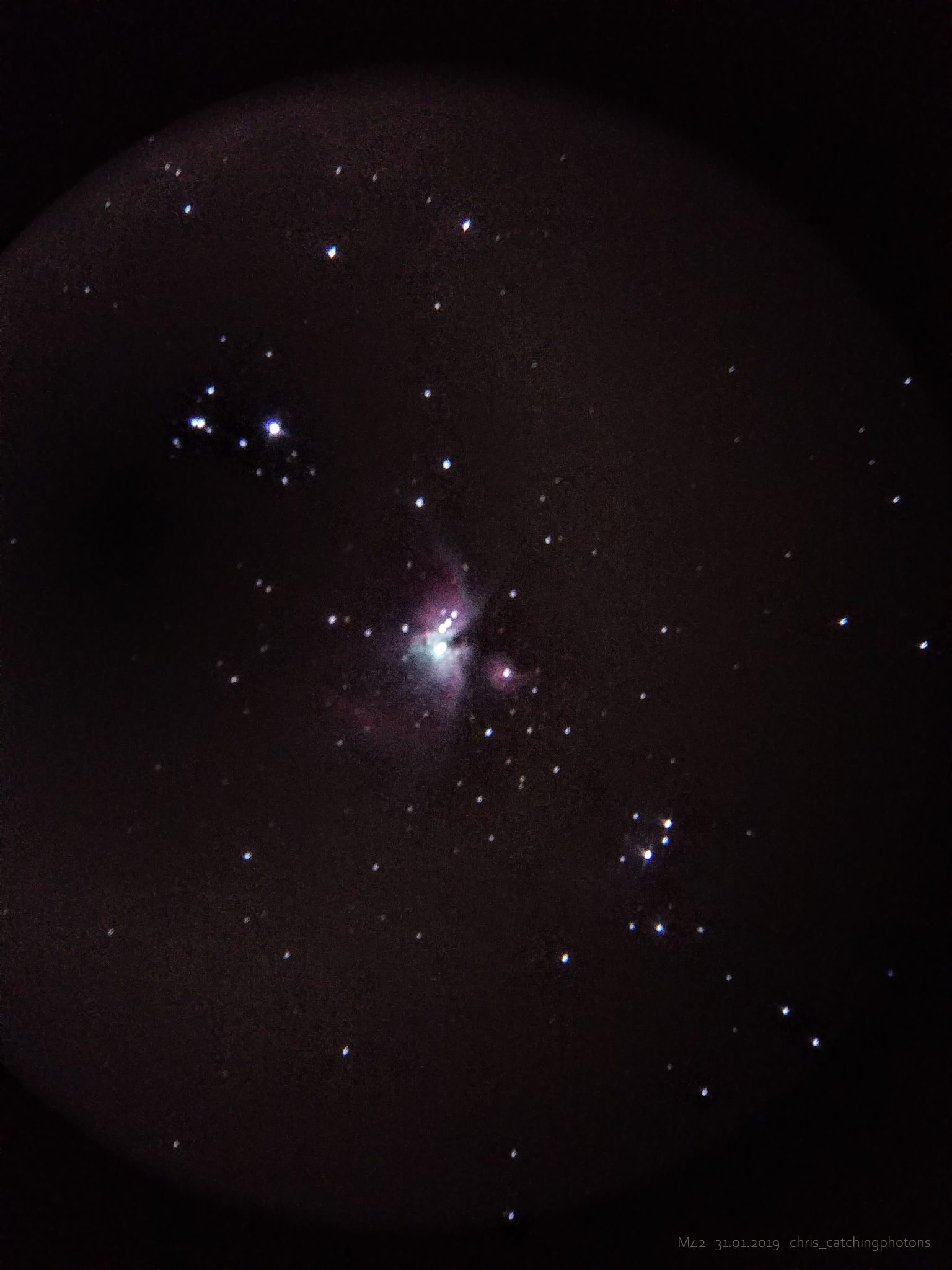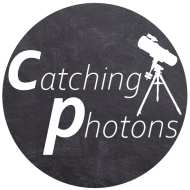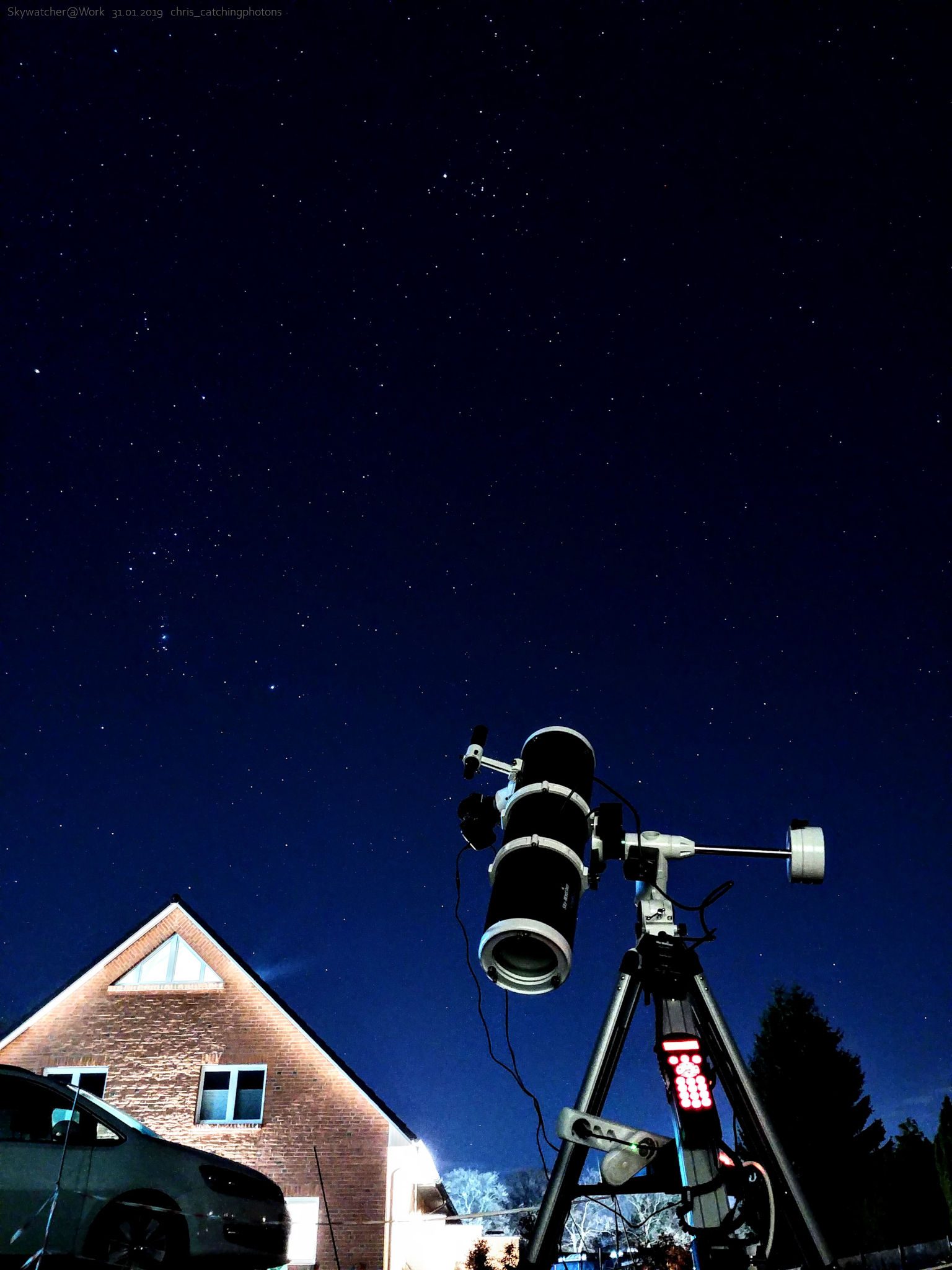31.01.2019
New aspect: Visual observation of DSOs
Image acquisition:
This two images of the Orion Nebula were taken using a smartphone hand-held in front of the 2” lens. This evening I observed a few DSOs with my Skywatcher 150/750 Newtonian on my little Skywatcher EQ-3 Pro mount. Doing visual astronomy is normally not really my thing but I wanted to give it a try. I was surprised, how much of M42 the Orion Nebula was visible trough my little 6” newtonian scope. But than I couldn’t resist to hold my LG G6 in front of the lens to shoot some images. I then tried to get the exposure time of that single frame exactly in such a way that it would match the experience with the eye. So here they are:
First image: Trying to get the max. exposure time possible with stars still round. You can even see parts of the running man nebula at the right edge of the image. M42 and M43 are clearly visible. Cloud structures of M42 are there and even colours made it into the image! Attention: there has been NO additional editing. That’s straight from the smartphone to the internet! I was quite amazed!

Second image: I tried to match the experience you would get with your eyes. You can see M42 and small parts of the cloud around. You definitely can see some dark dust layers in front of the illuminated clouds form some nice contrast. You can also see a bright star and hints of dust around it just left of M42: That’s M43.

Conclusion:
I like astrophotography more then visual astronomy. Every time I look through the eyepiece I wonder whether this can be captured with a camera. I mean: yes, it is an experience to actually look (!) at the stars of our universe.
The photons emitted from those objects have been on a journey for literally hundreds of thousands of years. Sometimes millions of years! And throughout all that time the photons travelled without any (!) contact. They hit nothing, saw nothing, interacted with nothing. They just flew and flew and flew trough the void. Than managed to sneak through all the atoms and molecules of our atmosphere and then: Hit your eye in just the right second to make the object look bright in the sky. Any seconds earlier or later and it would have missed your eye and its journey would have been pointless.
Me
Okay… that was much of a pathos but you get my point: Viewing is amazing if you think about this way. But nevertheless: If I see something than I want to share it. So all in all I will stick to my camera and make images I can show around or just watch myself and say: Cool! I did that!
So as always: Clear skies and greetings from
Chris

